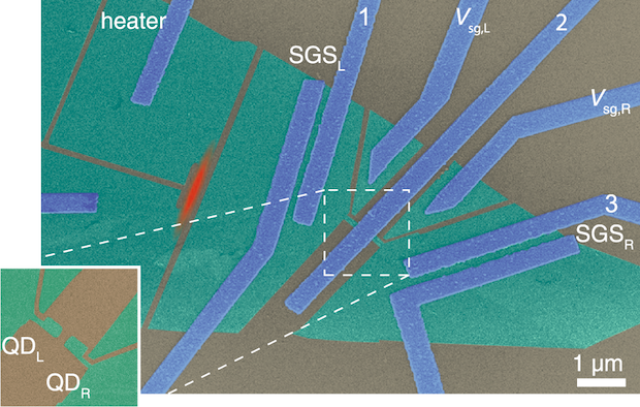A team of scientists from Finland, Russia, China and the United States has demonstrated that changing the temperature difference in a graphene system can be used to generate entangled electron pairs in superconducting structures. The work is presented in the journal Nature Communications.
Quantum entanglement is a necessary resource for the development of quantum technologies. For example, in quantum computers, entanglement is used to merge small quantum computing systems (qubits) into one, which exponentially increases computing power. Entanglement is also actively used in quantum cryptography, where it provides a secure exchange of information over a distance.
Superconductors are considered one of the most promising platforms for building devices for quantum computing, encryption and communication. They allow you to control the quantum parameters of the system macroscopically, for example, by changing the magnetic fields, and because of the low temperature, the noise level in such systems is small enough for quantum information processing. However, scientists are still searching for an optimal method for generating entanglement in superconductors.
A group of scientists led by Professor Pertti Hakonen from Aalto University experimentally demonstrated a new method for producing entangled electrons using thermoelectric effects in hybrid superconducting structures. The graphene-superconductor-graphene structure was considered as the system under study.
The thermoelectric effect in such a system is that when the temperature difference in graphene changes, the Cooper pairs of electrons in the superconductor split, and each electron moves to a metal electrode. Such a process does not destroy the entanglement that was in the Cooper pair, and therefore the electrons remain entangled, despite the separation in space.
To make thermoelectric measurements, physicists constructed a device from two thermometers and a resistive heater made from a monolayer of graphene. Thermometers are Josephson superconductor-graphene-superconductor junctions that could be used to measure local temperature by measuring the passing current. The resistive heater also consisted of graphene and was electrically isolated from the rest of the device: the heat that was needed to separate the Cooper pair was transferred through the substrate.
In addition to the method of generating entangled electrons, scientists have shown that the process of splitting a Cooper pair is a mechanism for converting the temperature difference into electricity in a superconductor.
Earlier, we wrote about how researchers from the same group developed and manufactured a quantum bolometer using graphene. Superconductors are still far from optical technologies for the distribution of entanglement: for example, recently, physicists from China managed to entangle two memory nodes through an optical fiber 50 kilometers long.
Michael Perelstein

